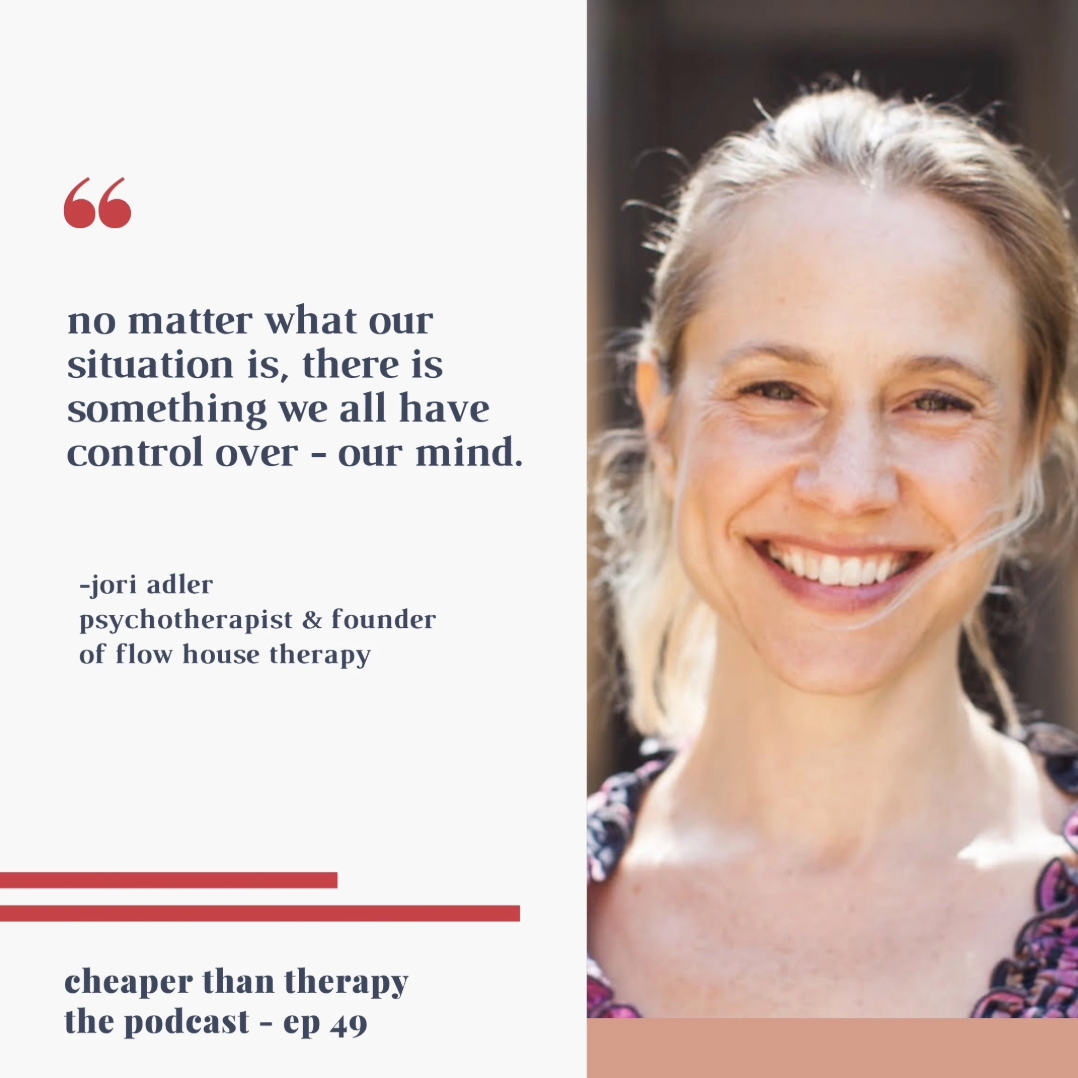Getting Past Your Past With EMDR
Eye Movement Desensitization and Reprocessing (EMDR)
As I've discussed before, trauma can have a devastating effect on the mind and body. EMDR is one of the most widely used and successful treatments for addressing this kind of impact.
However, you do not have to undergo an overtly distressing event for it to affect you. An accumulation of smaller “everyday” or less pronounced events can still be traumatic: conflict in relationships, an emotionally distant parent or partner, racial / sexual discrimination. EMDR can help you overcome experiences like these, which may lead to persistent negative beliefs such as, "I don't belong," "I have to be perfect," or "I'm worthless."
EMDR is related to the process that happens when we dream, known as REM sleep. Learn more about how we activate this bilateral stimulation in the brain.
Mount Tamalpais, CA
Eye Movement Desensitization and Reprocessing (EMDR)
The human body possesses an enormous, astonishing, and persistent capacity to heal itself. When you cut your hand, this process will automatically kick into gear. Just as the body is not able to heal a wound when there is debris in it, the brain often cannot process a disturbing experience and becomes like a blocked wound. In order for it to heal, we must clean it so the body can do its job.
EMDR unlocks what is natural within each of us. It is our innate healing process that has been blocked and can be unblocked with EMDR. There is an inherent wisdom within each person that is already whole, it is just obscured by negative images, feelings, and beliefs. Our job as therapists is to help clear the blockages so that our clients can have access to their natural states of well-being and emotional balance.
Major traumas, such as war, assaults, rape, abuse, natural disasters, accidents, and loss can understandably cause disruption and blockages. However, a person does not have to undergo an overtly distressing event for it to affect them. An accumulation of smaller “everyday” or less pronounced events can still be traumatic: conflict in relationships, insecurities, humiliations at a tender age, work dissatisfaction, having a child, financial difficulties, racial / sexual discrimination, verbal abuse, social media, that "look" your Dad gives you. In addition to specific upsetting memories, EMDR can help you overcome persistent negative beliefs like, "I don't belong," "I have to be perfect," or "I'm worthless."
In EMDR, we activate the brain processing systems by asking you to focus on a "target" related to the trauma, such as a memory with the image, emotions, body sensations, and negative beliefs associated with it. Through this target we are attempting to stimulate the memory network where the trauma is stored. After stimulating the memory network, we add alternating eye movements ("follow my fingers with your eyes to the left, right, left, right") or other bilateral stimulation (gently tapping on your right knee, left knee, right knee, left knee ; listening to a sound in your right ear, left ear, right ear, left ear). Bilateral stimulation activates accelerated information processing, a multidimensional free association of thoughts, feelings, and sensations that enables you to tap into insight and understanding in a previously inaccessible way. Forgotten memories, fragments of images, beliefs, seemingly random connections, body sensations pass through rapidly. Everyone has his or her own unique processing style.
Each set further unlocks and unblocks distressing information and accelerates it along a path toward natural healing. The emotional charge is reduced or eliminated and there is an objective understanding of the event: "It's over," "This happened to me and it wasn't my fault," "Now it feels like I'm reading about it in a newspaper." EMDR helps get you in touch with a felt sense of freedom and truth.
How does it work?
In truth, no one knows how any form of psychotherapy works neurobiologically or in the brain. EMDR seems to have a direct effect on the way that the brain processes information. The process of bilateral stimulation is similar to what occurs naturally during dreaming or REM (rapid eye movement) sleep. It is during REM sleep, which is characterized by "rapid, jerky, and binocularly symmetrical eye movements," that the brain's memory systems are programmed. We can't possibly store all of the information we receive in a day, so REM discards, filters, and files data into our memory banks. Therefore, when we re-enact this process with bilateral stimulation, we are going directly to the source.
EMDR therapy is an eight-phase treatment. Bilateral stimulation is used during one part of the treatment. The therapy involves attention to three time periods: the past, present, and future. Focus is given to past disturbing memories and related events. Also, it is given to current situations that cause distress, and to developing the skills and attitudes needed for positive future actions.
The Proof?
Repeated studies show that by using EMDR therapy people can experience the benefits of psychotherapy that once took years. More than thirty positive controlled outcome studies have been conducted on EMDR therapy. Some of the studies show that 84%-90% of single-trauma victims no longer have post-traumatic stress disorder after only three 90-minute sessions. Another study, funded by the HMO Kaiser Permanente, found that 100% of the single-trauma victims and 77% of multiple trauma victims no longer were diagnosed with PTSD after only six 50-minute sessions. In another study, 77% of combat veterans were free of PTSD in 12 sessions.
There has been so much research on EMDR therapy that it is now recognized as an effective form of treatment for trauma and other disturbing experiences by organizations such as the American Psychiatric Association, the World Health Organization, the Department of Defense, and the Department of Veterans Affairs. Over 100,000 clinicians throughout the world use the therapy. Millions of people have been treated successfully over the past 25 years.
Please get in touch if you're interested in giving it a try!
EMDR Institute
Getting Past Your Past by Francine Shapiro
Tapping In by Laurel Parnell
Will I Ever Be Good Enough?
Have you wondered where your internalized message of "I'm not good enough," comes from? Do you feel you give life your best, work hard, try hard, but still can't give yourself credit? Are you constantly beating yourself up and thinking that somehow you should be more, do more, be better, and you don't measure up in your own mind?
Aunt Deedy & Mom, East Hampton, 1958
Have you wondered where your internalized message of "I'm not good enough," comes from? Do you feel you give life your best, work hard, try hard, but still can't give yourself credit? Are you constantly beating yourself up and thinking that somehow you should be more, do more, be better, and you don't measure up in your own mind?
But how does the message "I'm not good enough" get internalized? Where does this come from? To start with, I want you to think about small children and how impressionable they are, how they are soaking up life and trying to learn and understand the world around them. And, the most important thing to them is gaining love and affection from their caregivers. They do not yet have a worldly or experienced understanding of human behavior or why people behave in certain ways. Their main goal is to be loved, and this is of course, what every child deserves.
So, given that the child's goal is to be loved and cared for, the child begins to try to "fix" the adult problems so they can achieve their goal. They don't do this consciously, of course, but many start this at a very early age. "If only I was a better kid, this would not be happening." "If I did better in school, my parents wouldn't fight." "If I listen to my parents' problems, maybe they will be less stressed." "If I do more chores or housework, maybe Mommy won't be so sad."
Children are like sponges and take in their environment on emotional levels as well as physical and intellectual levels. They learn very early that if Mommy and Daddy are happy then they themselves will be happier too and get more of the love they need. "When Mommy is happy, she will play with me and spend time with me." "When Daddy is not mad, he will be nicer to all of us." Kids want peace, love and harmony in their lives and need it to thrive emotionally. So, if it is not there, guess what they do? Try to fix it by trying to be a better and better kid, or they may also try the opposite and act out to get their parents to focus on them. But they are learning and internalizing that no matter what they do, they cannot fix their parent's problems. They are kids, and of course this is not their problem to fix, but they don't know that yet. So, they keep trying.
Many times parents in dysfunctional families will blame their children or project onto their children the bad feelings the parent is feeling at the moment. Narcissists do this all the time. They are internally self-loathing, but project this onto their children rather than embrace and resolve their own feelings. It's always someone else's fault. A child knows no different. Of course, they take this on too. "It must be me." "It must be my fault if my parent is mean to me, or can't love me." "I must be unlovable." So the child ends up carrying the emotional baggage of the family and takes on the burden. "If only I could do more, be better."
If this sounds like pieces of your childhood, hopefully you begin to realize the message was wrong. It was not your fault. It was a distorted reality that you had to buy into to survive in a dysfunctional environment. Understanding that is the first step towards healing and unwinding the negative message of "I am not good enough." You can also begin to take ownership of your own life, play with those voices in your head, and realize that you can change yourself as an adult and be who you want to be.
The Body Keeps the Score : Recovering from Trauma
When a person experiences traumatic events, the aftermath can be extremely debilitating. Trauma not only affects the mind, but can have lifelong effects on the body. For survivors, their bodies feel deeply unsafe, so the enemy that was once living outside is now living within. So they need to befriend their bodies, safely go inside and experience themselves. There is too much emphasis on the capacity of the cognitive rational brain to conquer our irrational survival brain. You can't rely on reason, you need rely on mastery of your body, safety of your body, finding peace in your body. You need to find some way where your body once again feels like "I am in control of myself."
Wedding Day. By Della Chen.
When a person experiences traumatic events, the aftermath can be extremely debilitating. Trauma not only affects the mind, but can have lifelong effects on the body. Trauma is an experience that overwhelms your capacity to cope. People feel helpless, overwhelmed, scared, horrified.
For trauma survivors, their bodies feel deeply unsafe, so the enemy that was once living outside is now living within. They need to befriend their bodies, they need to calm their bodies down. Yoga is more effective than medication; medication can be nice to dampen some of the symptoms. But in the end, people need to own their bodies, they need to own their physical experiences. And, in order to overcome your trauma, it needs to be safe to go inside and to experience yourself.
There is too much emphasis on the capacity of the cognitive rational brain to conquer our irrational survival brain. Neuroscience has really helped us understand that you can't talk yourself out of being in love, or being angry, or hating particular people because these are not rational processes. Reason has only very limited capacities to override these more primitive survival issues. And so, you need to not rely on reason, you need rely on mastery of your body, safety of your body, finding peace in your body. You need to find some way where your body once again feels like "I am in control of myself."
- From Bessel Van der Kolk, author of The Body Keeps the Score: Brain, Mind, and Body in the Healing of Trauma.
The following is an excerpt from the book:
Mindfulness
At the core of recovery is self-awareness. The most important phrases in trauma therapy are “Notice that” and “What happens next?” Traumatized people live with seemingly unbearable sensations: They feel heartbroken and suffer from intolerable sensations in the pit of their stomach or tightness in their chest. Yet avoiding feeling these sensations in our bodies increases our vulnerability to being overwhelmed by them. Body awareness puts us in touch with our inner world, the landscape of our organism. Simply noticing our annoyance, nervousness, or anxiety immediately helps us shift our perspective and opens up new options other than our automatic, habitual reactions. Mindfulness puts us in touch with the transitory nature of our feelings and perceptions. When we pay focused attention to our bodily sensations, we can recognize the ebb and flow of our emotions and, with that, increase our control over them.
Traumatized people are often afraid of feeling. It is not so much the perpetrators (who, hopefully, are no longer around to hurt them) but their own physical sensations that now are the enemy. Apprehension about being hijacked by uncomfortable sensations keeps the body frozen and the mind shut. Even though the trauma is a thing of the past, the emotional brain keeps generating sensations that make the sufferer feel scared and helpless. It’s not surprising that so many trauma survivors are compulsive eaters and drinkers, shun making love, and avoid many social activities: Their sensory world is largely off limits.
In order to change you need to open yourself to your inner experience. The first step is to allow your mind to focus on your sensations and notice how, in contrast to the timeless, ever-present experience of trauma, physical sensations are transient and respond to slight shifts in body position, changes in breathing, and shifts in thinking. Once you pay attention to your physical sensations, the next step is to label them, as in “When I feel anxious, I feel a crushing sensation in my chest.” And you can begin to notice how these sensations constantly shift and change.
Practicing mindfulness calms down the sympathetic nervous system, so that you are less likely to be thrown into fight‑or‑flight. Learning to observe and tolerate your physical reactions is a prerequisite for safely revisiting the past. If you cannot tolerate what you are feeling right now, opening up the past will only compound the misery and retraumatize you further.
Once we are fully aware that the commotions in our bodies are in a constant state of flux we can tolerate whatever discomfort comes up. One moment your chest tightens, but after you take a deep breath and exhale, that feeling softens and you may observe something else, perhaps a tension in your shoulder. Now you can start exploring what happens when you take a deeper breath and notice how your rib cage expands. Once you feel calmer and more curious, you can go back to that sensation in your shoulder. You should not be surprised if a memory spontaneously arises in which that shoulder was somehow involved.
A further step is to observe the interplay between your thoughts and your physical sensations. How are particular thoughts registered in your body? (Do thoughts like “My father loves me” or “my girlfriend dumped me” produce different sensations?) Becoming aware of how your body organizes particular emotions or memories opens up the possibility of releasing sensations and impulses that you may have learned to block in order to survive.
Relationships
Study after study shows that having a good support network constitutes the single most powerful protection against becoming traumatized. Safety and terror are incompatible. When we are terrified, nothing calms us down like the reassuring voice or the firm embrace of someone we trust. Frightened adults respond to the same comforts as terrified children: gentle holding and rocking and the assurance that somebody bigger and stronger is taking care of things, so you can safely go to sleep. In order to recover, mind, body, and brain need to be convinced that it is safe to let go. That happens only when you feel safe at a visceral level and allow yourself to connect that sense of safety with memories of past helplessness.
After an acute trauma, like an assault, accident, or natural disaster, survivors require the presence of familiar people, faces, and voices; physical contact; food; shelter and a safe place; and time to sleep. It is critical to communicate with loved ones close and far and to reunite as soon as possible with family and friends in a place that feels safe. Our attachment bonds are our greatest protection against threat. For example, children who are separated from their parents after a traumatic event are likely to suffer serious negative long- term effects. Studies conducted during World War II in England showed that children who lived in London during the Blitz and were sent away to the countryside for protection against German bombing raids fared much worse than children who remained with their parents and endured nights in bomb shelters and frightening images of destroyed buildings and dead people.
Traumatized human beings recover in the context of relationships: with families, loved ones, AA meetings, veterans’ organizations, religious communities, or professional therapists. The role of those relationships is to provide physical and emotional safety, including safety from feeling shamed, admonished, or judged, and to bolster the courage to tolerate, face, and process the reality of what has happened.
As we have seen, much of the wiring of our brain circuits is devoted to being in tune with others. Recovery from trauma involves (re)connecting with our fellow human beings. This is why trauma that has occurred within relationships is generally more difficult to treat than trauma resulting from traffic accidents or natural disasters. In our society the most common traumas in women and children occur at the hands of their parents or intimate partners. Child abuse, molestation, and domestic violence all are inflicted by people who are supposed to love you. That knocks out the most important protection against being traumatized: being sheltered by the people you love.
If the people whom you naturally turn to for care and protection terrify or reject you, you learn to shut down and to ignore what you feel. When your caregivers turn on you, you have to find alternative ways to deal with feeling scared, angry, or frustrated. Managing your terror all by yourself gives rise to another set of problems: dissociation, despair, addictions, a chronic sense of panic, and relationships that are marked by alienation, disconnection, and explosions.
Patients with these histories rarely make the connection between what happened to them long ago and how they currently feel and behave. Everything just seems unmanageable. Relief does not come until they are able to acknowledge what has happened and recognize the invisible demons they’re struggling with.
While human contact and attunement are the wellspring of physiological self-regulation, the promise of closeness often evokes fear of getting hurt, betrayed, and abandoned. Shame plays an important role in this: “You will find out how rotten and disgusting I am and dump me as soon as you really get to know me.” Unresolved trauma can take a terrible toll on relationships. If your heart is still broken because you were assaulted by someone you loved, you are likely to be preoccupied with not getting hurt again and fear opening your heart to someone new. In fact, you may unwittingly try to hurt them before they have a chance to hurt you.
This poses a real challenge for recovery. Once you recognize that post-traumatic reactions started off as efforts to save your life, you may gather the courage to face your inner music (or cacophony), but you will need help to do so. You have to find someone you can trust enough to accompany you, someone who can safely hold your feelings and help you listen to the painful messages from your emotional brain. You need a guide who is not afraid of your terror and who can contain your darkest rage, someone who can safeguard the wholeness of you while you explore the fragmented experiences that you had to keep secret from yourself for so long. Most traumatized individuals need an anchor and a great deal of coaching to do this work.
Our Internalized Loyal Soldier
"Each of us has a 'loyal soldier' sub-personality, a courageous, creative, and stubborn entity formed to help us survive the realities of childhood.
The loyal soldier attempted to minimize the occurrence of injury by making us small or invisible and suppressing much of our natural exuberance, emotions, and desires so that we might be sufficiently acceptable to our parents, siblings, teachers, and peers.
Common loyal soldier survival strategies include:
- Harsh self-criticism to make us feel small and unworthy and thus keep us from doing anything too wild that might elicit further punishment, abandonment, or criticism
- Placing our personal agenda last so as to not displease or arouse anger or envy
- Other co-dependent behaviors, such as care-taking, rescuing, or enabling to stave off abandonment
- Restricting our range of feeling by encouraging us to always be in control, busy, and/or numb
- Suppressing our intelligence, talent, enthusiasm, sensuality, and wildness
The loyal soldier believes that it is better to be suppressed or inauthentic or small than socially isolated or emotionally crushed.
The loyal soldier did in fact keep us safe in childhood. The problem is these strategies become ingrained in our functioning, even after the threats are over. And not only are they no longer helping us, they become an obstacle to growth."
In what ways does your loyal soldier show up?
- By choosing social acceptance over authenticity?
- By avoiding conflict or fear of upsetting/disappointing people?
- By going along with the crowd because it’s easier or because you don't know what you truly want?
- By avoiding unnecessary risks?
- By suppressing your hurt or anger?
- By suppressing your natural gifts because you don't want to stand out?
When you notice yourself enacting any of these strategies, try thanking your loyal soldier for protecting you during the war, and remind her that the war is over.
Tell her what you’ll do in place of the old strategies, and remind yourself of the new resources available to handle any new crises that might arise along the way.
It's time to retire your loyal soldier!
- Bill Plotkin
















